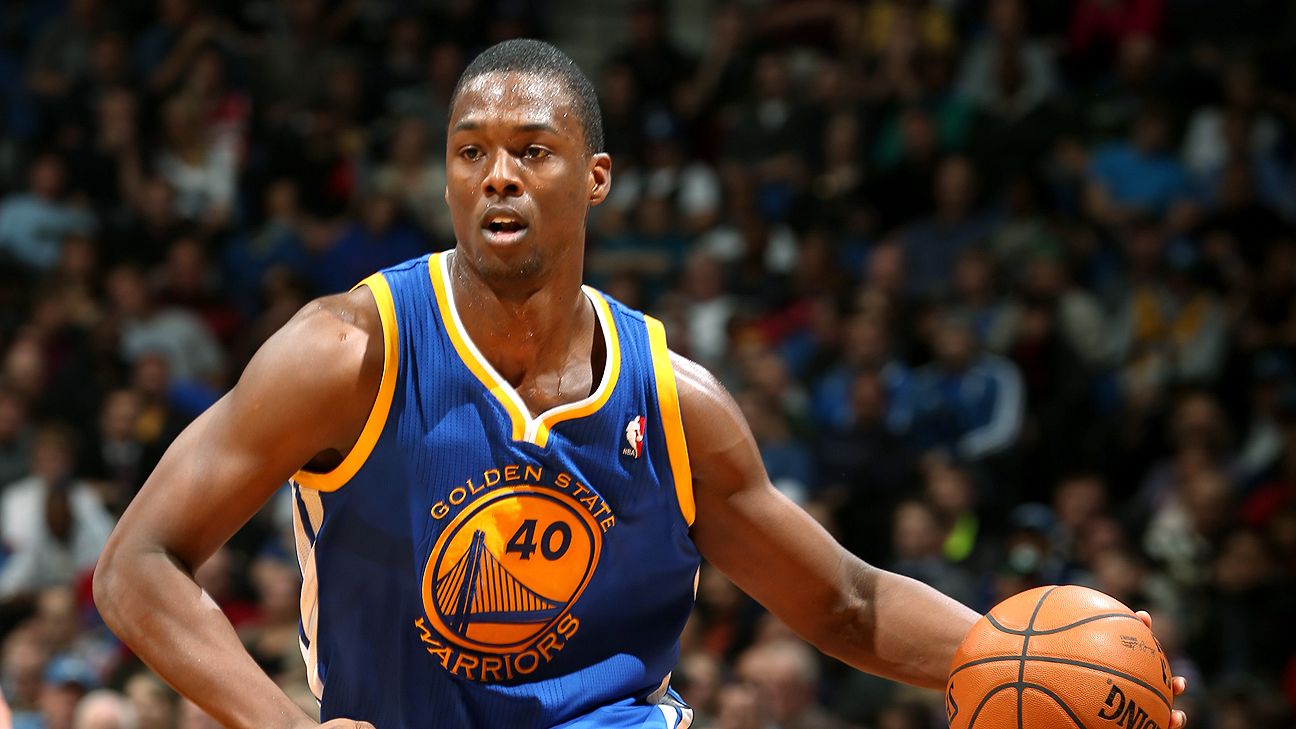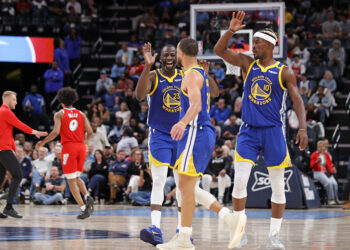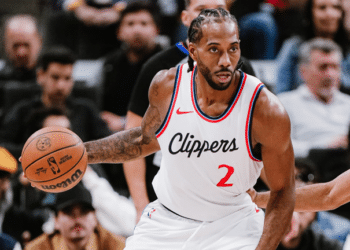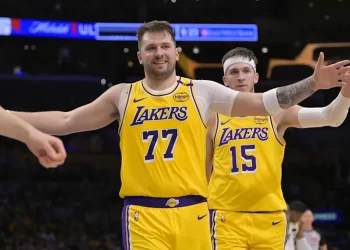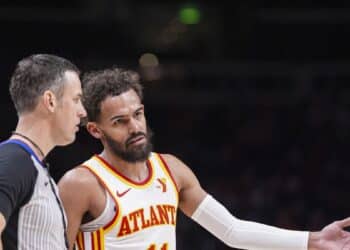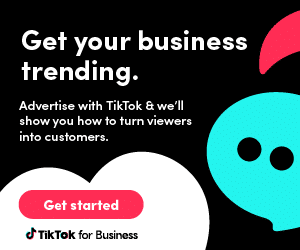By: Chad Berman and Alex Pacione
Now that the NBA season is over and the “Steph Curry is the best player in the league” movement has fizzled out worse than Jason Pierre-Paul’s fireworks, it’s time to shift our focus to free agency. With the salary cap projected to increase from $70 million to $94 million next season due to the league’s lucrative new television deal, teams are going to have serious Oprah money to spend this offseason. That’s why we’re going to team up like the Avengers with our friend and fellow Nuts and Bolts writer Chris Molicki for a summer 2016 free agency series. We’ll be evaluating multiple players who will be testing the market in the offseason. Chris recently wrote an article about Oklahoma City Thunder forward Kevin Durant and his possible destinations, which you can check out here.
The first player we’re going to profile is Golden State Warriors forward Harrison Barnes. The most glaring issue organizations need to be cognizant of when considering signing Barnes is this: He’s undoubtedly an intriguing talent who shows ample versatility and flashes of brilliance, but is he truly worth a max contract? (Like honestly, is this what the NBA has come to, that we’re actually writing about Harrison Barnes being a candidate for a max deal? Jesus. Next thing we know, Ricky Sanchez is going to get a max contract.) Last year, Barnes reportedly turned down a four-year, $64 million extension from the Warriors, a decision that illuminated his belief that he would be in line for a max deal this year, which would amount to about $23 million per season.
We believe that signing Barnes to a max deal would be equivalent to attempting to get Jonah Hill to maintain a consistent weight: at this point, it’s just not worth it.
However, Barnes is only 24 years old and undeniably has a skill set that is very valuable in today’s NBA. He’s a solid two-way player who can hit the three-ball and guard multiple positions. This year, he hit over 38% (38.3) of his threes, and on defense, his assignments ranged from shooting guards to centers. He also spent a lot of time at power forward in the Warriors’ infamous “Death Lineup.”
As the league has been deliberately evolving into smaller lineups, matchups have become more crucial than ever. While not a premier shut-down defender, at 6’8” and 225 pounds, Barnes is quick enough to cover out on the perimeter, strong enough to switch onto larger players in the post, and rangy enough to disrupt passing lanes. The dynamicism that Barnes offers is special, and he was incontrovertibly a key piece of the Warriors’ record-breaking 73-win team this season.
While Barnes has shown great utility and the ability to knock down long-range shots, it could be argued that he is simply a product of the Golden State system. With Curry and shooting guard Klay Thompson garnering so much attention, the floor really opens up for Barnes and the rest of the Warriors, allowing them to hit a lot of easy buckets. Shooting 38% from downtown is easy when you’re standing in the corner with your feet set just waiting to take an uncontested three. Hell, even Vince Wilfork, the NFL’s obese Michelin Man, can do it, and his stomach literally touches the football field when he gets into a three-point stance (skip ahead to 0:34 to see Air Wilfork make it rain). But Barnes’ shot-creating abilities haven’t materialized yet, and while only 24, he hasn’t measurably developed that part of his game since entering the league in 2012. In fact, this year, his field-goal and three-point percentages both regressed from last season, going from 48.2% to 46.6% and 40.5% to 38.3%, respectively.
On defense, it could be argued that Barnes and the Warriors have been so effective because, with the way their lineup is designed, they can theoretically switch on every pick-and-roll. Barnes has spent more time this year guarding post players, and while he has demonstrated the ability to shadow other positions, for teams looking for that traditional 3 and D to guard their opponents’ primary scorers, Barnes might not be the perfect fit.
Additionally, there were times throughout the 2016 playoffs, especially during the NBA Finals, when Barnes completely disappeared. We really cannot begin to elucidate how horrific his performance was during the Finals. There isn’t yet an existing metric that can properly personify how dreadful Barnes was in the series. During a huge Game 6, Barnes went 0-for-8 from the field with zero points in 16 minutes of action—and he missed all five of his three-point attempts. This was after a dismal 2-for-14 performance in Game 5 in which he made 1 of 6 threes. In the win-or-go-home Game 7? Barnes shot 3-for-10 from the field. For the entire Finals, he shot an odious 35.2% from the field and 31% from downtown, atrocious numbers for a player who expects to receive a max contract. Throughout the entire 2016 postseason, Barnes shot a still-shameful 38.5% from the field and 34.2% from three. How can the Warriors justify giving Barnes a max deal and making him the highest-paid player on a championship team after he came up so small when his team needed him the most?
While Barnes is young and has a lot of room to grow, it would be a colossal misjudgment for an NBA team to throw max money at him. Perhaps on a team with more offensive opportunities Barnes could explode, but as of now, and after such a horrendous 2016 playoffs, he’s clearly not a good enough shot-creator or finisher at the rim to justify such a mammoth contract. As a role player, he has played well, but for max money? We just don’t think the upside is there.
But since the free-agent class is fairly feeble this year (outside of Lebron James and Kevin Durant, who likely won’t be lured away from their current teams), we wouldn’t be surprised if teams looking to make a splash extend Barnes a sizable offer. A more-than-likely destination for Barnes to make max money could be the Los Angeles Lakers, especially if they fail in their attempts to recruit KD. Barnes would be reunited with his Warriors assistant coach, Luke Walton, who will take over head-coaching duties for LA next season, and would also be paired with a solid young core in guards D’Angelo Russell and Jordan Clarkson, forward Julius Randle, and recent No. 2 overall pick Brandon Ingram.
Other young teams with a lot of cap space, such as the Philadelphia 76ers or the Orlando Magic, could also attempt to sign Barnes to a max deal, but as Sixers fans, we hope they don’t pull the trigger. According to recent rumors, though, the Sixers plan to aggressively pursue Barnes in free agency. However, general manager and president of basketball operations Bryan Colangelo has thus far proved to be a tentative truster of the process, so we are cautiously optimistic that this unfortunate fate won’t befall the 76ers.
Ultimately, it would be a laughably ill-advised move to sign Barnes to a max contract, but a team with an itchy trigger finger and a boatload of cash likely will anyway. Such is life in the modern NBA.


 NFL
NFL